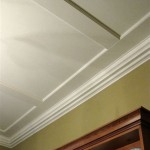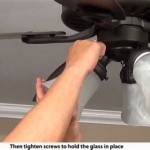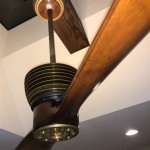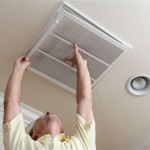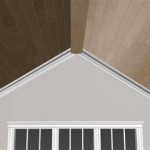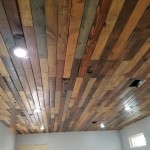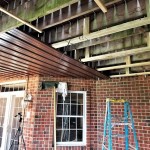HVAC Vents in Ceilings: A Comprehensive Overview
Heating, ventilation, and air conditioning (HVAC) systems are integral to maintaining comfortable and healthy indoor environments. A crucial component of any HVAC system is the network of vents that distribute conditioned air throughout a building. Ceiling HVAC vents, specifically, are a common and effective method for delivering air in residential, commercial, and industrial spaces. This article provides a detailed examination of ceiling HVAC vents, covering their types, advantages, disadvantages, installation considerations, and maintenance requirements.
The primary function of ceiling HVAC vents is to diffuse conditioned air, either heated or cooled, into a room. They connect to ductwork hidden above the ceiling, allowing for a relatively unobtrusive air distribution system. The placement in the ceiling leverages natural convection principles. Warm air rises, benefiting heating systems by distributing warmth from the ceiling downwards. Conversely, cool air descends, making ceiling vents effective for air conditioning as the cool air naturally settles towards the floor.
The effectiveness of ceiling HVAC vents relies on several factors, including the size and shape of the vent, the airflow rate, and the overall design of the HVAC system. Proper design and installation are crucial to ensure even temperature distribution and prevent drafts or hot/cold spots within a room.
Types of Ceiling HVAC Vents
Ceiling HVAC vents are available in various types, each offering specific advantages and suitability for different applications. Here are some of the most common types:
1. Diffusers: Diffusers are designed to distribute air evenly in multiple directions, creating a consistent temperature throughout the space. They typically feature a series of concentric rings or vanes that deflect the airflow. Diffusers are often square or round and are available in various sizes and materials. They are commonly used in offices, schools, and commercial buildings due to their ability to cover large areas efficiently.
There are several subtypes of diffusers, including:
- Square Diffusers: These are the most common type, offering a balanced airflow pattern. They are versatile and can be used in various ceiling types.
- Round Diffusers: These offer a more aesthetically pleasing appearance and are often used in residential settings or areas where design is a primary consideration.
- Linear Diffusers: These are long, narrow diffusers that provide a continuous line of airflow. They are often used along walls or in corridors to distribute air evenly.
2. Registers: Registers are similar to diffusers but include adjustable louvers that allow for directional control of the airflow. This feature enables users to direct air towards specific areas of a room, which can be beneficial for personalized comfort or to address localized temperature imbalances. Registers are often used in residential settings where occupants may have varying temperature preferences.
The adjustability of registers makes them suitable for rooms with varying occupancy levels or areas that are prone to drafts. However, the ability to direct airflow also means that registers can be easily misadjusted, leading to uneven temperature distribution if not properly managed.
3. Grilles: Grilles typically consist of a series of parallel bars or a decorative pattern that allows air to flow through. They are primarily used for air return, drawing air back into the HVAC system for recirculation. While some grilles can be used for air supply, they generally do not offer the same level of diffusion or directional control as diffusers or registers. Grilles are essential for maintaining proper air circulation within a building.
Return air grilles are usually larger than supply air vents to accommodate the greater volume of air being drawn back into the system. They are often located near the floor or in other areas where stale or contaminated air tends to accumulate.
4. Jet Nozzles: Jet nozzles are designed to deliver a concentrated stream of air over a long distance. They are typically used in large spaces with high ceilings, such as warehouses, gymnasiums, or auditoriums, where conventional diffusers or registers would be ineffective. Jet nozzles can be adjusted to direct the airflow to specific zones within the space.
The high velocity airflow from jet nozzles requires careful consideration to avoid creating uncomfortable drafts. These systems are typically designed and installed by HVAC professionals to ensure optimal performance and occupant comfort.
Advantages of Ceiling HVAC Vents
Ceiling HVAC vents offer several advantages over other vent placement options, such as floor or wall-mounted vents. These advantages contribute to their widespread use in various building types.
1. Even Air Distribution: As mentioned earlier, ceiling placement leverages natural convection, promoting more even temperature distribution throughout a room. This is particularly beneficial in larger spaces or rooms with high ceilings, where floor-mounted vents may struggle to effectively reach all areas.
The uniform air distribution minimizes temperature gradients, creating a more comfortable and consistent environment for occupants. This can lead to improved productivity in office settings and increased comfort in residential spaces.
2. Space Saving and Aesthetics: Ceiling vents are less obtrusive compared to floor or wall-mounted vents. They do not occupy valuable floor space or detract from the aesthetic appeal of a room. The ductwork is concealed above the ceiling, further minimizing the visual impact of the HVAC system.
The discreet nature of ceiling vents makes them a popular choice for architects and interior designers who prioritize a clean and uncluttered appearance. Various vent designs and finishes are available to complement different interior styles.
3. Reduced Dust and Debris Accumulation: Ceiling vents are less susceptible to dust and debris accumulation compared to floor vents. This is because dust and debris tend to settle on horizontal surfaces, making floor vents more prone to blockage. Cleaner vents contribute to better air quality and reduced maintenance requirements.
However, it is still important to regularly inspect and clean ceiling vents to prevent the buildup of dust and allergens. This is particularly important for individuals with respiratory sensitivities.
Disadvantages of Ceiling HVAC Vents
While ceiling HVAC vents offer numerous advantages, they also have certain drawbacks that should be considered when designing an HVAC system.
1. Installation Complexity: Installing ceiling vents typically requires access to the ceiling space, which can be more challenging and costly than installing floor or wall-mounted vents. This is especially true in existing buildings where ductwork may need to be routed through existing walls or ceilings.
Professional installation is highly recommended to ensure proper sealing of ductwork and prevent air leaks. Poorly installed ceiling vents can lead to energy waste and reduced HVAC system efficiency.
2. Difficult Access for Maintenance: Ceiling vents can be more difficult to access for cleaning and maintenance compared to floor or wall-mounted vents. This may require the use of ladders or lifts, which can be inconvenient and potentially hazardous.
Regular maintenance is essential to ensure optimal performance and prolong the lifespan of ceiling vents. Ignoring maintenance can lead to reduced airflow, increased energy consumption, and potential health hazards.
3. Potential for Stratification: In some cases, ceiling vents can contribute to temperature stratification, where warm air accumulates near the ceiling while the floor remains cooler. This is more likely to occur in rooms with high ceilings or poor insulation.
Proper HVAC system design and insulation can help mitigate temperature stratification. Additionally, using ceiling fans to circulate air can help to mix the air and reduce temperature differences.
In conclusion, ceiling HVAC vents are a widely used and effective method for distributing conditioned air in various building types. Their advantages, such as even air distribution, space saving, and reduced dust accumulation, make them a popular choice for residential, commercial, and industrial applications. However, it is important to consider the potential disadvantages, such as installation complexity, difficult maintenance access, and potential for stratification, when designing and installing an HVAC system. Careful planning and professional installation are crucial to ensure optimal performance and occupant comfort.

The Benefits Of Using Ceiling Hvac Vents

Ceiling Ac Vents Pros And Cons Aire Serv

How To Open And Close Ceiling Air Vents

Ceiling Ac Vents Pros And Cons

How To Replace Your Ac Vent Covers Clf Services

Why Adding A Return Air Vent Improves Your Home S Comfort Bird Family Insulation

Everbilt 12 In X 8 2 Way Steel Wall Ceiling Register White E102m12x08 The Home Depot

3 Ways To Fix Water Stains On Your Ceiling Air Conditioning Vents Baylor Heating Inc

Ceiling Ac Duct For Ventilation At Rs 1200 Piece In New Delhi Id 21321231597

Replacing A Heat Vent Register
Related Posts

